Abstract
The suppressive effect of antibody on the secondary immune response was analysed using a technique of memory cell transfer into X-irradiated recipients. The response of memory cells stimulated by antigen-bearing cells was markedly suppressed when antibody was passively administered to recipients and this had its maximal effect when administered simultaneously with the cell transfer. The capacity of memory cells to respond to antigenic stimulation and the capacity of antigen-bearing cells to stimulate memory cells were not directly impaired by the suppressive antibody. The marked suppression was observed only when both memory cells and antigen-bearing cells were present together with antibody. These results suggest that antibody-induced suppression appears to be caused by blocking the effective antigenic stimulus from antigen-bearing cells to memory cells.
Evidence is presented indicating that pre-existing antibody plays a regulatory role in the initiation of the secondary response and also controls the expression of memory.
Full text
PDF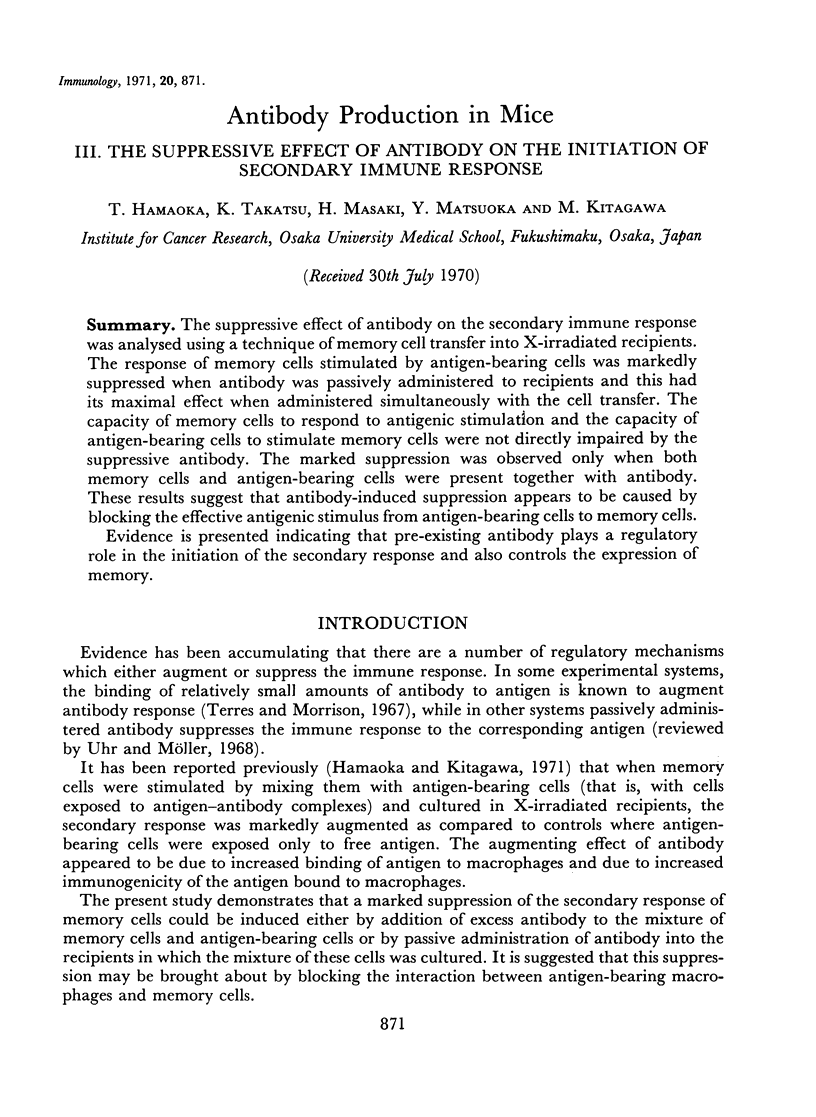
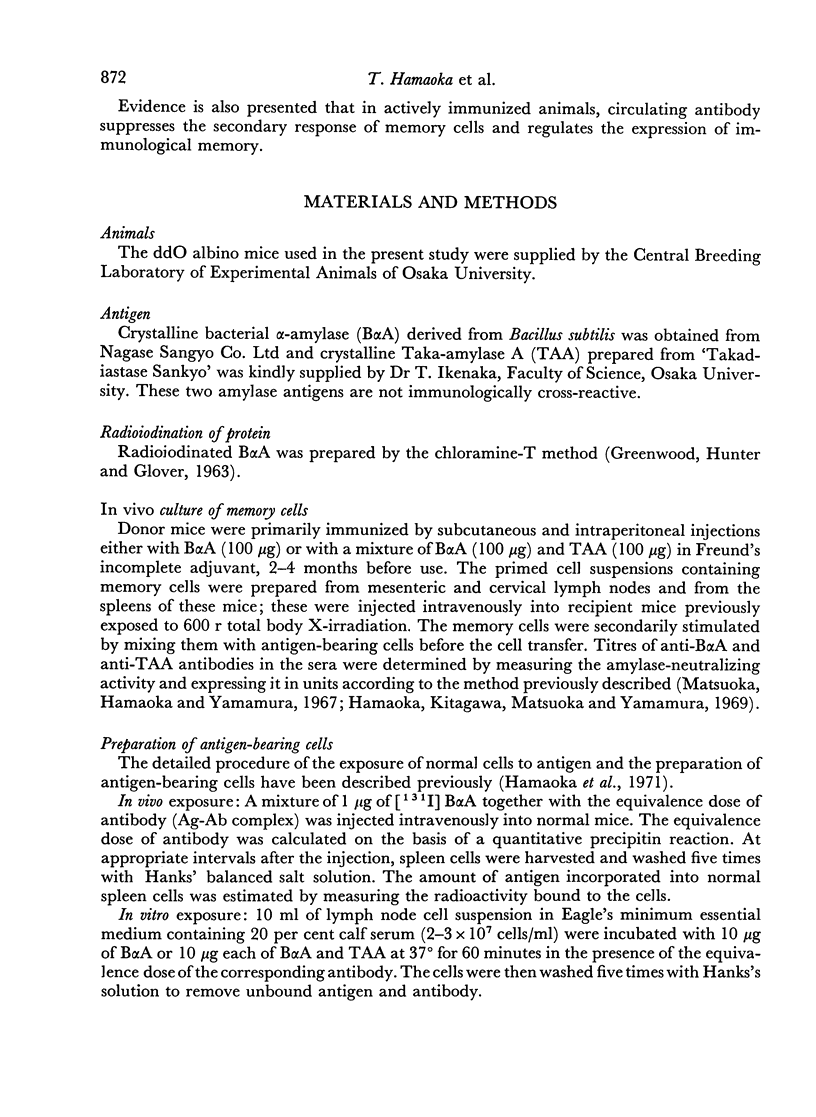

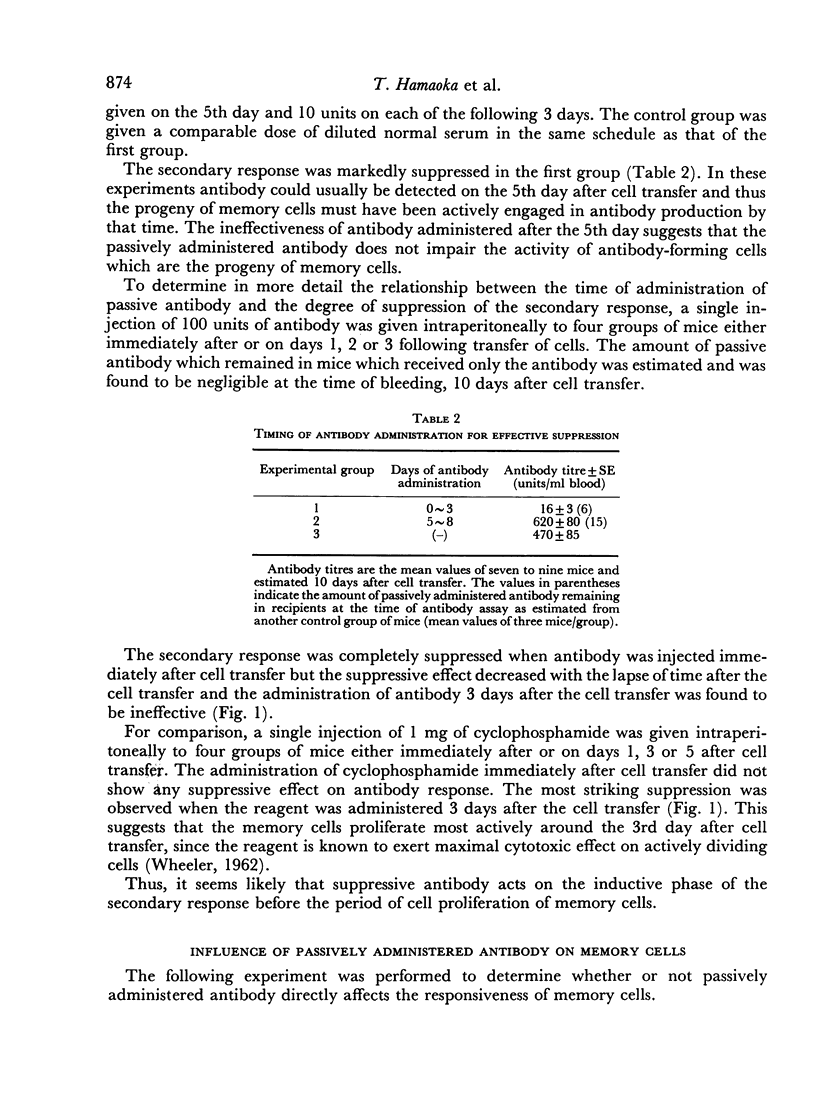
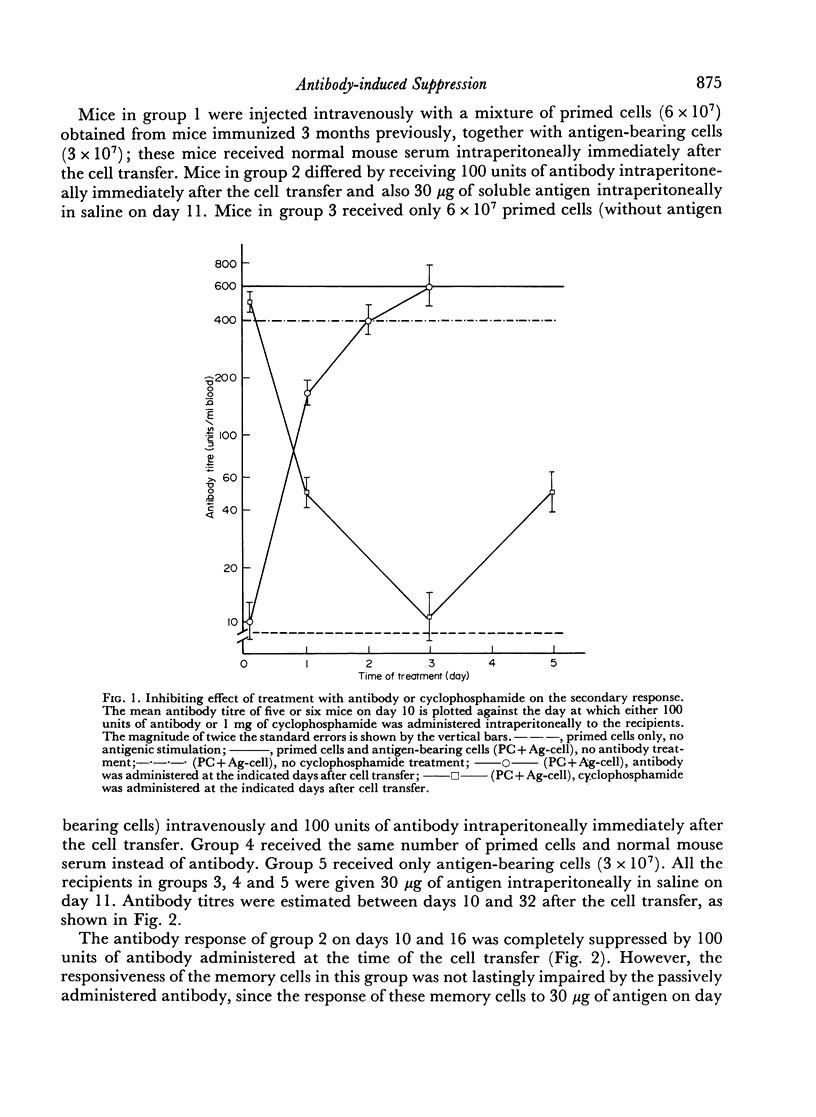
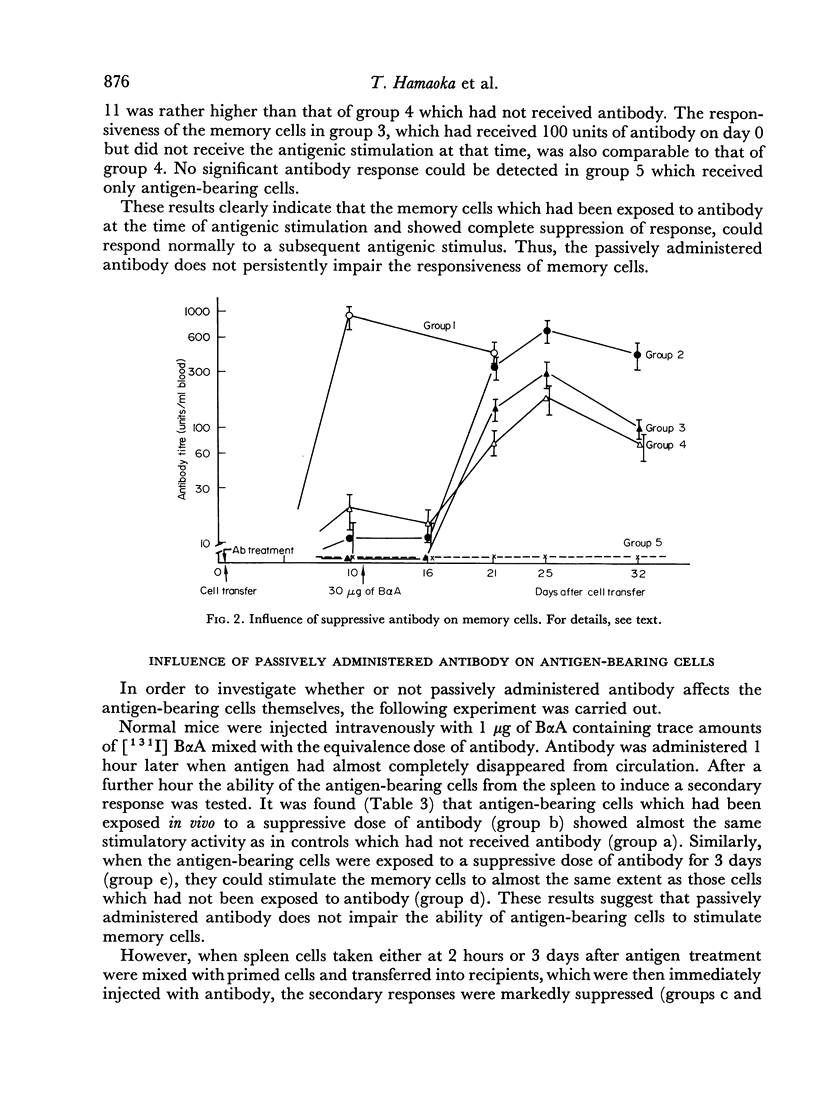

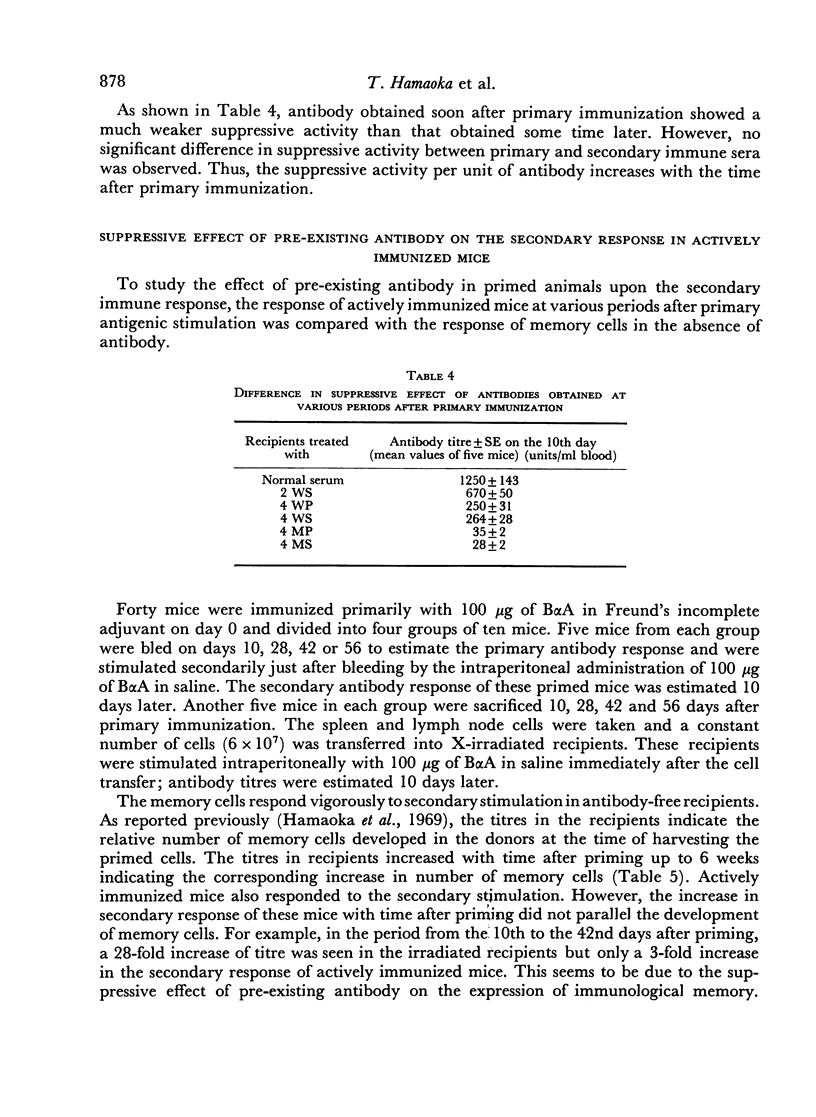

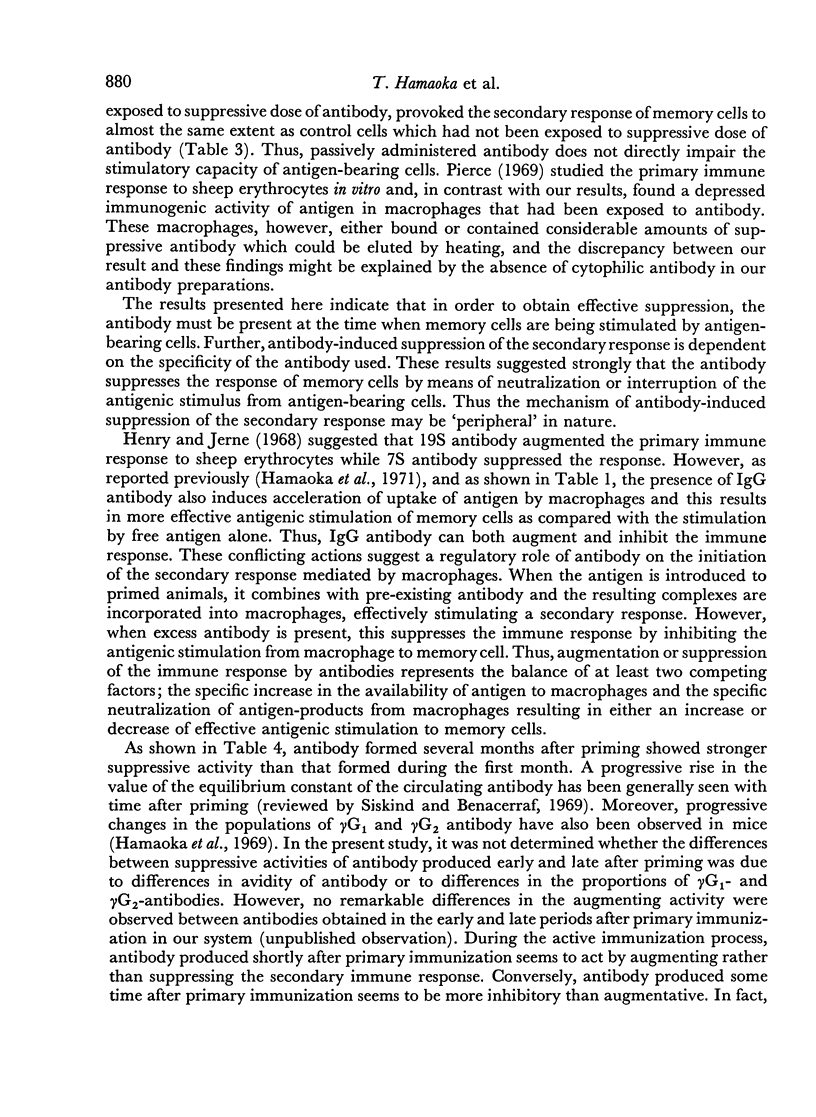
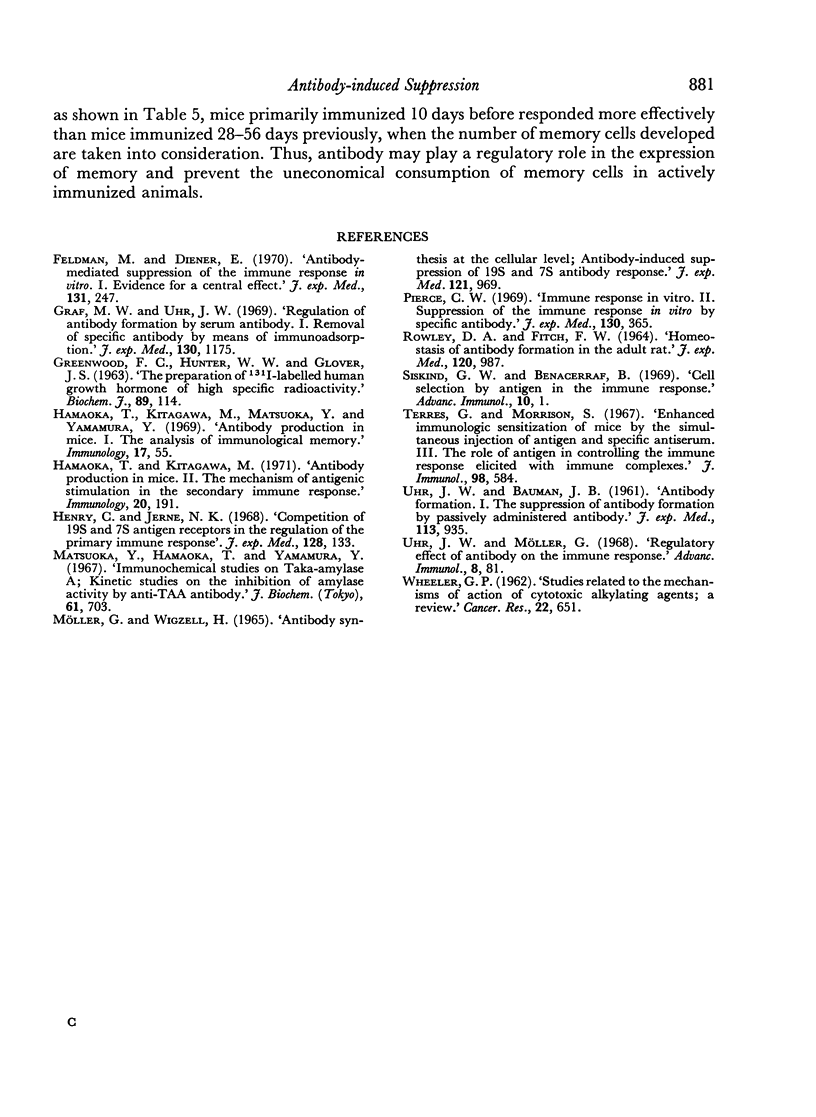
Selected References
These references are in PubMed. This may not be the complete list of references from this article.
- Feldmann M., Diener E. Antibody-mediated suppression of the immune response in vitro. I. Evidence for a central effect. J Exp Med. 1970 Feb;131(2):247–274. doi: 10.1084/jem.131.2.247. [DOI] [PMC free article] [PubMed] [Google Scholar]
- GREENWOOD F. C., HUNTER W. M., GLOVER J. S. THE PREPARATION OF I-131-LABELLED HUMAN GROWTH HORMONE OF HIGH SPECIFIC RADIOACTIVITY. Biochem J. 1963 Oct;89:114–123. doi: 10.1042/bj0890114. [DOI] [PMC free article] [PubMed] [Google Scholar]
- Graf M. W., Uhr J. W. Regulation of antibody formation by serum antibody. I. Removal of specific antibody by means of immunoadsorption. J Exp Med. 1969 Nov 1;130(5):1175–1186. doi: 10.1084/jem.130.5.1175. [DOI] [PMC free article] [PubMed] [Google Scholar]
- Hamaoka T., Kitagawa M. Antibody production in mice. II. The mechanism of antigenic stimulation in the secondary immune response. Immunology. 1971 Feb;20(2):191–203. [PMC free article] [PubMed] [Google Scholar]
- Hamaoka T., Kitagawa M., Matsuoka Y., Yamamura Y. Antibody production in mice. I. The analysis of immunological memory. Immunology. 1969 Jul;17(1):55–69. [PMC free article] [PubMed] [Google Scholar]
- Henry C., Jerne N. K. Competition of 19S and 7S antigen receptors in the regulation of the primary immune response. J Exp Med. 1968 Jul 1;128(1):133–152. doi: 10.1084/jem.128.1.133. [DOI] [PMC free article] [PubMed] [Google Scholar]
- MOLLER G., WIGZELL H. ANTIBODY SYNTHESIS AT THE CELLULAR LEVEL. ANTIBODY-INDUCED SUPPRESSION OF 19S AND 7S ANTIBODY RESPONSE. J Exp Med. 1965 Jun 1;121:969–989. doi: 10.1084/jem.121.6.969. [DOI] [PMC free article] [PubMed] [Google Scholar]
- Matsuoka Y., Hamaoka T., Yamamura Y. Immunochemical studies on taka-amylase A. Kinetic studies on the inhibition of amylase activity by anti-taa antibody. J Biochem. 1967 Jun;61(6):703–711. doi: 10.1093/oxfordjournals.jbchem.a128604. [DOI] [PubMed] [Google Scholar]
- Pierce C. W. Immune responses in vitro. II. Suppression of the immune response in vitro by specific antibody. J Exp Med. 1969 Aug 1;130(2):365–379. doi: 10.1084/jem.130.2.365. [DOI] [PMC free article] [PubMed] [Google Scholar]
- ROWLEY D. A., FITCH F. W. HOMEOSTASIS OF ANTIBODY FORMATION IN THE ADULT RAT. J Exp Med. 1964 Dec 1;120:987–1005. doi: 10.1084/jem.120.6.987. [DOI] [PMC free article] [PubMed] [Google Scholar]
- Siskind G. W., Benacerraf B. Cell selection by antigen in the immune response. Adv Immunol. 1969;10:1–50. doi: 10.1016/s0065-2776(08)60414-9. [DOI] [PubMed] [Google Scholar]
- Terres G., Morrison S. L. Enhanced immunologic sensitization of mice by the simultaneous injection of antigen and specific antiserum. 3. The role of antigen in controlling the immune response elicited with immune complexes. J Immunol. 1967 Mar;98(3):584–592. [PubMed] [Google Scholar]
- UHR J. W., BAUMANN J. B. Antibody formation. I. The suppression of antibody formation by passively administered antibody. J Exp Med. 1961 May 1;113:935–957. doi: 10.1084/jem.113.5.935. [DOI] [PMC free article] [PubMed] [Google Scholar]
- Uhr J. W., Möller G. Regulatory effect of antibody on the immune response. Adv Immunol. 1968;8:81–127. doi: 10.1016/s0065-2776(08)60465-4. [DOI] [PubMed] [Google Scholar]
- WHEELER G. P. Studies related to the mechanisms of action of cytotoxic alkylating agents: a review. Cancer Res. 1962 Jul;22:651–688. [PubMed] [Google Scholar]


